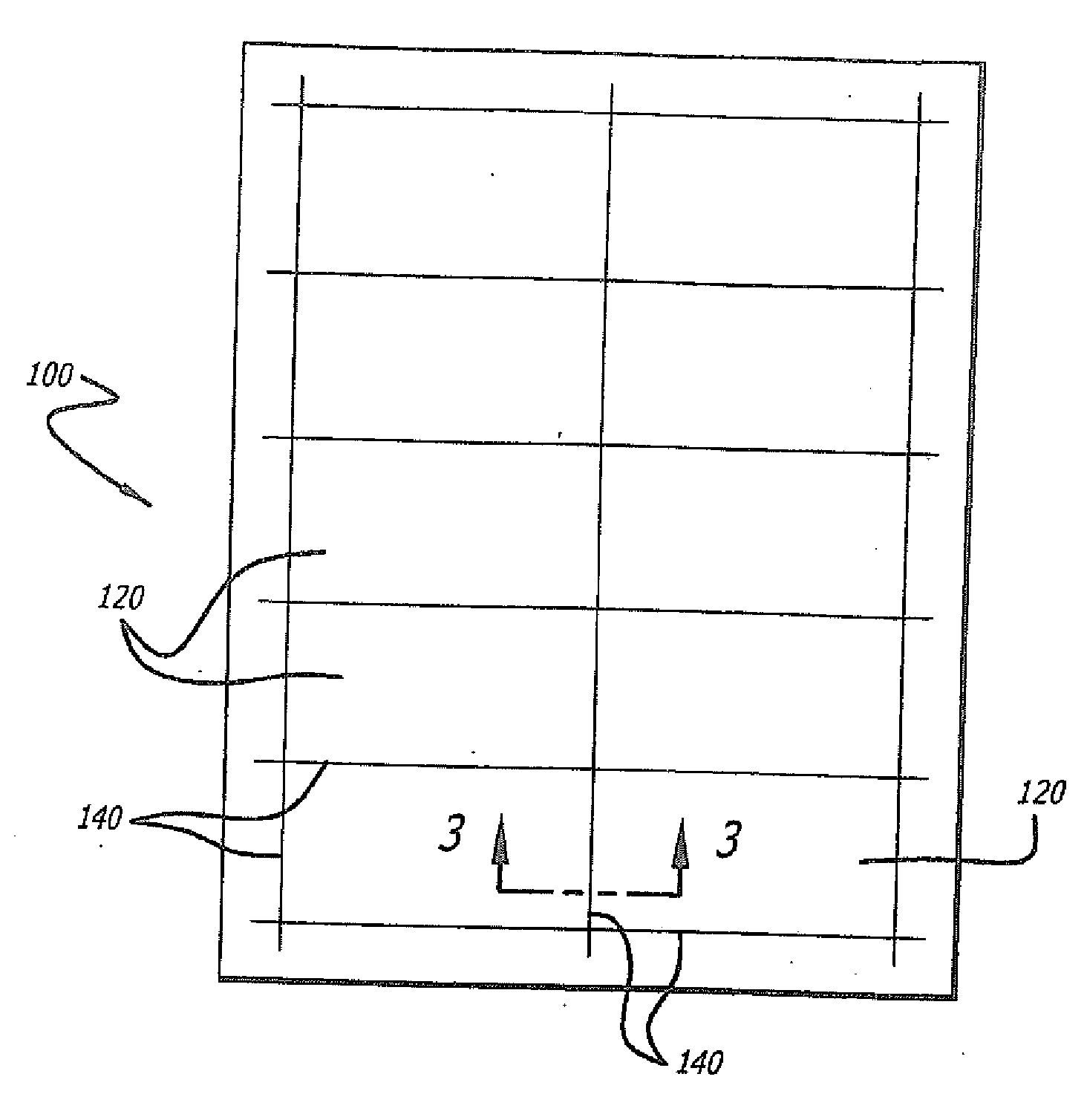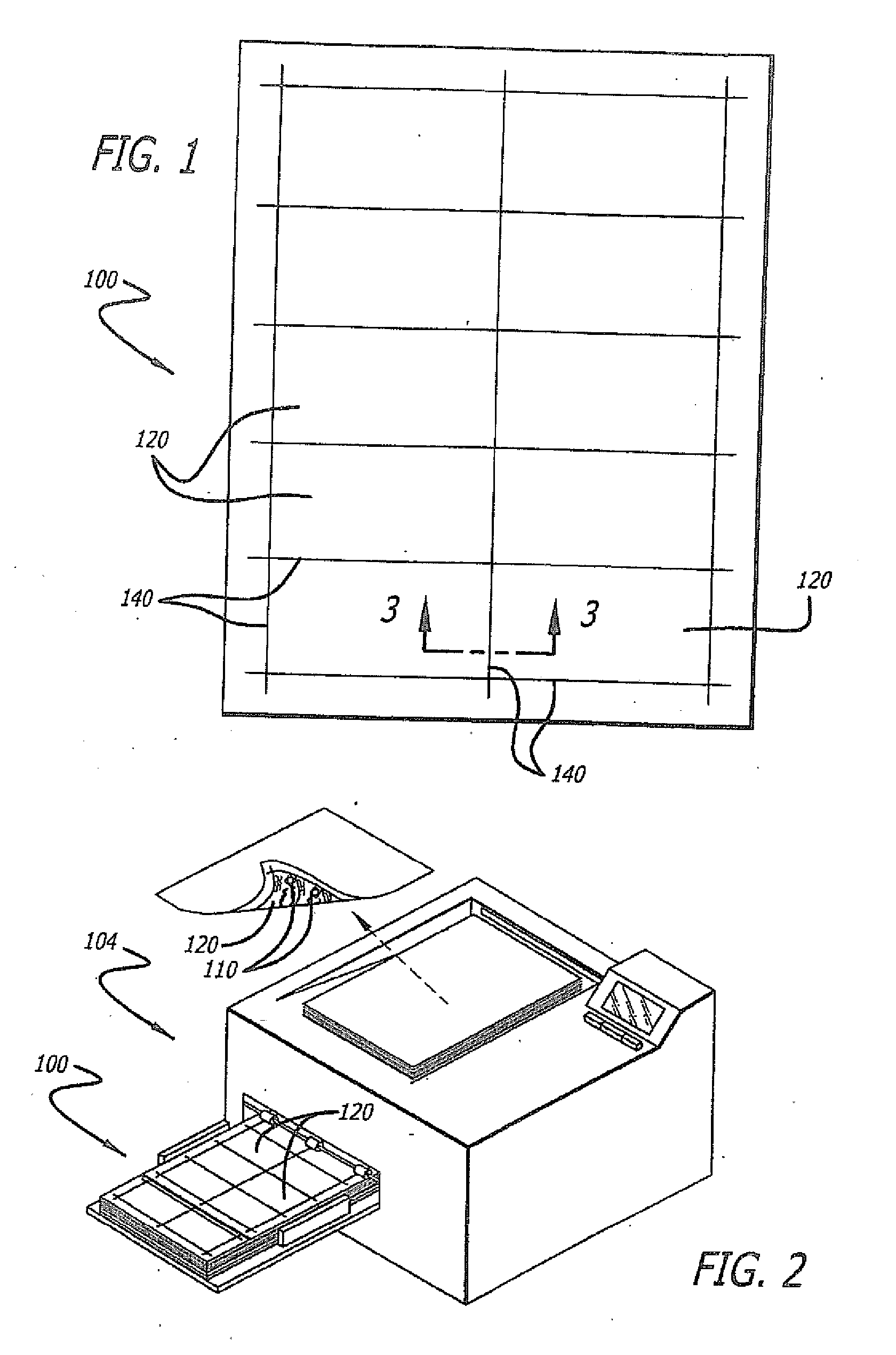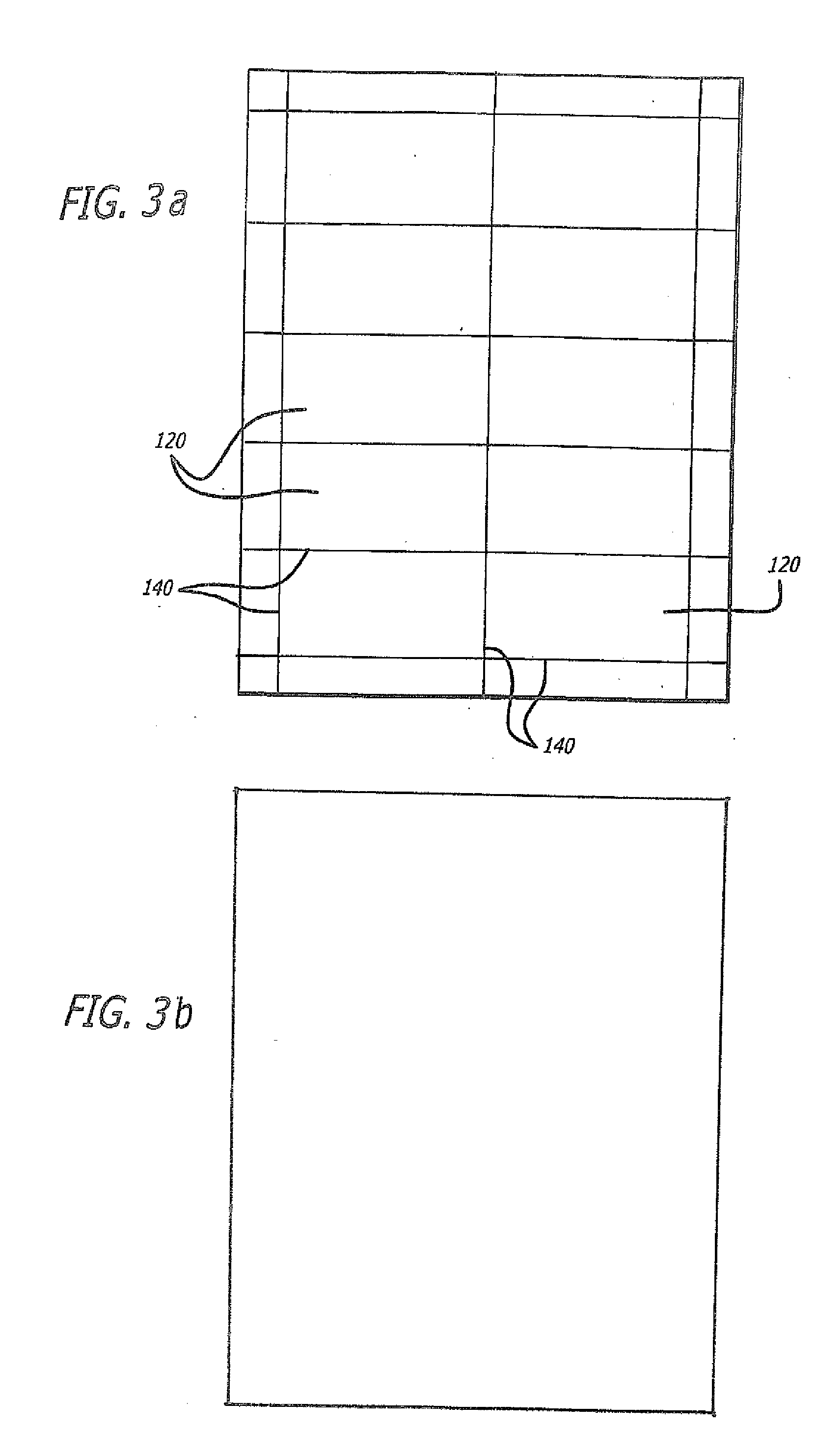Clean edged cards on plastic carrier
a plastic carrier and clean technology, applied in the field of calling or business cards, can solve the problems of unsightly and unwonderful separation residues, small size printable media, and inability to individually print with conventional laser or inkjet printers, and achieve the effect of simple back and/or forth motion, clean separation in the top sheet, and convenient separation of individual cards
- Summary
- Abstract
- Description
- Claims
- Application Information
AI Technical Summary
Benefits of technology
Problems solved by technology
Method used
Image
Examples
example 1
[0045] Polymethyl pentene (TPX) with a coating weight of twenty g / m2 is extruded onto the reverse side of an A4 sheet consisting of 185 g / m2 ivory board, which is suited to be printed with a laser printer and an inkjet printer. The sheet is punched on the front side in two rows of five calling or business cards each. The card is broken out by bending it away from the top material. The card is then peeled and separated from the carrier sheet.
example 2
[0046] TPX with a coating weight of twenty g / m2 is extruded onto the reverse side of an A4 sheet consisting of 200 g / m2 glossy cast-coated paper for inkjet photo prints. The reverse side of the sheet (the side onto which the polymer is extruded) is as smooth as the front side. The sheet is punched on the front side. The card is broken out by bending it away from the top material. The card is then peeled and separated from the carrier sheet.
example 3
[0047] A preformed polyethylene film with a coating weight of twenty g / m2 is laminated using heat and / or pressure onto the reverse side of an A4 sheet consisting of 185 g / m2 ivory board, which is suited to be printed with a laser printer and an inkjet printer. The sheet is punched on the front side in two rows of five calling or business cards each. The card is broken out by bending it away from the top material. The card is then delaminated from the carrier film by stretching the film.
PUM
| Property | Measurement | Unit |
|---|---|---|
| width | aaaaa | aaaaa |
| size | aaaaa | aaaaa |
| size | aaaaa | aaaaa |
Abstract
Description
Claims
Application Information
 Login to View More
Login to View More - R&D
- Intellectual Property
- Life Sciences
- Materials
- Tech Scout
- Unparalleled Data Quality
- Higher Quality Content
- 60% Fewer Hallucinations
Browse by: Latest US Patents, China's latest patents, Technical Efficacy Thesaurus, Application Domain, Technology Topic, Popular Technical Reports.
© 2025 PatSnap. All rights reserved.Legal|Privacy policy|Modern Slavery Act Transparency Statement|Sitemap|About US| Contact US: help@patsnap.com



